Gallaudet Students Push for a Deaf President
When the sitting President of Gallaudet University, Dr. Jerry C. Lee abruptly announced his resignation in August of 1987, the campus viewed the move as a long awaited opportunity for profound change. Founded in 1864, the University was a center of excellence and high achievement for the Deaf community, but never had a deaf President in its 124-year history.[1] Deaf representation was sparse across Gallaudet’s faculty and out of the 21 members on the Board of Trustees, only four were deaf.[2] The disproportionate administrative power of hearing people angered and frustrated students and alumni. As Gallaudet’s student body president Greg Hlibok put it later, “you can't teach someone what it feels like to be deaf, and a hearing person can't learn it.”[3]
While the University’s Board of Trustees opened a search for the new President, students and faculty made sure their voices were heard by forming the President’s Council on Deafness (PCD) to communicate campus perspectives to the Board. Their expectation was clear: the next President of Gallaudet must be deaf. Recognized as the highest office in the world of Deaf education, PCD publications expressed that “with a deaf person in the position of leadership, one that has the same views, experiences, and needs that we do, people will become more informed of the needs of deaf people.”[4]
The PCD, in cooperation with alumni groups, national non-profits, and congressional representatives, wrote articles and sent letters to Board members recommending deaf candidates and expressing their long-awaited desires for representation in this prestigious position. Support poured-in from politicians and advocates from across the country. Then Vice-President George H.W. Bush wrote to the Presidential Search Committee saying, “Gallaudet University is a symbol of leadership and opportunity, not only for deaf people, but for all of us...as an entity funded by the Federal government, Gallaudet has a responsibility to set an example and thus to appoint a President who is not only highly qualified, but who is also deaf.”[5] Now, all of Washington’s eyes were set on the Board.
After a six month search, the Board prepared to announce the three finalists on March 1, 1988. Students organized a massive rally that was attended by over 1,500 students, alumni, faculty, and staff who packed the University’s athletic fields shouting and signing their demands for a deaf President.[6] In front of a clapping and stomping crowd of his peers, Hlibok articulated that “we want one of our own in charge...to pick a deaf president would be an inspiration for the deaf community in the world!”[7] Empowered with energy, the rally moved across the campus, traveling to the President’s home and the statue of the institution's founder, Edward Miner Gallaudet. Jeff Rosen, a Deaf lawyer and member of the PCD Committee, captured the spirit of the rally:
“We won’t wait...we are going to take control over our future."[8]
To those in attendance, there was cause for cautious optimism when the Board shared the names of the top three finalists selected from a pool of 67 applicants. Two of them – I. King Jordan and Harvey J. Corson – were deaf educators and Gallaudet alumni. The third, Elisabeth A. Zinser, was a hearing administrator from the University of North Carolina at Greensboro. Final interviews would take place in short order and the Board would announce its choice within the week.
As the wait for a decision continued, the rally extended into a four-day sit-in complete with tents scattered across the President’s lawn and a temporary shutdown of traffic on Florida Avenue.[9] In the course of their activism, Gallaudet students studied the rallies, speeches, and sit-ins of the Black Civil Rights leaders in the decades before them, and used many of the same strategies. As one faculty member told the New York Times, “Gallaudet is just a few blocks from the scene of the civil rights protest and riots of 1968...in some real way, this is an extension of that movement.”[10]
With a unified campus supported by prominent politicians and activist groups, the students and faculty had reason to believe their proactive demonstrations would result in the long-awaited appointment of a deaf President. So it came as quite a shock when on March 6, 1988 the Board of Trustees announced that Elisabeth Zinser, the only remaining hearing candidate, had been chosen as Gallaudet’s new President.[11]
Disbelief and outrage erupted into immediate protests. How could the Board so blatantly ignore their demands? Hundreds of students swarmed into the streets, stopping cars and buses as they marched to confront the Trustees meeting at Mayflower Hotel on Connecticut Avenue.[12] Arriving at the hotel, the angry crowd interrupted the press conference led by the Board Chair, Jane Spilman. Spilman, who was not fluent in sign language, announced the Board’s choice to reporters saying, “we are aware that this decision will be terribly disappointing to many”, fueling the student’s fire by insisting that Zinser, “a caring person [with] extensive experience”, was the best choice.[13] Protesters interrupted Spilman’s justifications, questioning why Zinser was chosen when she lacked fluency in sign language, with one student shouting, “[she] has no experience with deaf people. We are not satisfied with your choice at all!”[14] Students also criticized Spilman directly, calling out the fact the sudden departure of the sitting President was because he accepted a position at Bassett Furniture, a company owned by Spilman and her husband.[15]
Eager to deescalate the scene of protesters shouting “fight for Deaf rights!” in front of the reporters, Spilman agreed to speak privately with student representatives. The outcome of the meeting had the opposite effect. According to students in attendance, Spillman justified the Board’s selection of Zinser by saying “deaf people are not ready to function in a hearing world.”[16] Although Spilman denied making this statement, it became a rallying point for students who argued that Spilman and the majority-hearing Board lacked sensitivity and understanding of Deaf people’s abilities and needs.
The Board refused to change its decision, prompting protesters to march to the White House and the Capitol building announcing their cries for a “Deaf President Now” throughout the night.[17] The next day, Gallaudet was completely shut down. Students arrived on campus at five in the morning to deflate their car tires and form human chains, effectively blocking each of the University’s six entrances.[18] Administrators struggled to enter their offices, and by noon all classes were cancelled. Crowds gathered on the athletic fields and sang in a huge circle as PCD activists developed four demands which they presented as the following statements to the Board:
1) We demand that the Board of Trustees appoint one of the two deaf finalists as President, Gallaudet University...NOW!
2) We demand that Jane Bassett Spilman resign from the Board immediately and that a deaf Board Member be elected as chairperson.
3) We demand that the Board initiate the process of changing its By-Laws to conform with the C.O.E.D.'s recommendations to Congress of a 51% deaf member representation on the Board of Trustees.
4) We demand that no student, staff or faculty member of Gallaudet University be subject to any reprisals as a result of their standing on this matter.[19]
For the activists, it was “four demands or nothing!”[20] Once again, Spilman and the Board refused to renounce their decision to hire Zinser and rejected the proposal to restructure the Board and increase Deaf representation across the institution. Spilman maintained, “I do not accept the premise that the search process was flawed,” and made her way to the auditorium to officially announce the decision to the campus.[21] However, before stepping onto the stage, she was cut off by faculty members who encouraged students to walk-out and spontaneously march to the Capitol Building where instead of excuses, they listened to inspiring speeches from members of the Deaf community and their allies.
One day rolled into the next as students skipped classes to attend rallies, block campus entrances, and give interviews to reporters. Letters of support from activists, politicians, donors, and alumni poured in. Rev. Jesse Jackson summarized the students’ fight succinctly: “The problem is that not that the students do not hear. The problem is that the hearing world does not listen.”[22] He continued, “the entire nation owes the students of Gallaudet its gratitude for reminding us once again that each of us has the ability and the right to achieve. I urge the Board of the University to move forward and recognize the justice of its students' demands."[23]
Media coverage of the protests stretched far beyond Washington as Gallaudet students appeared on national radio and television shows including Good Morning America.[24] Hearing reporters communicated with deaf activists through the help of American Sign Language (ASL) interpreters, volunteering at protest events in displays of solidarity. For students like Patty Dooley, the media spotlight was an opportunity “to show the world that the deaf are not inferior and the deaf can do it.”[25]
It was an impactful message. Jill Robinson, an attorney from Arlington, VA who used a wheelchair remembered being glued to her television during the protests. She told reporters that following the Gallaudet story was “...one of the most poignant moments of my life...these students [were] fighting my fight.”[26]
On the evening of March 10, Elizabeth Zinser announced her resignation, calling the students’ activism “a civil rights movement whose time had come.”[27] Gallaudet’s campus erupted into short-lived celebrations, though student activists reminded each other that they still had outstanding demands. Gallaudet student R.G. Gentry wrote an article for The Washington Post articulating the students’ next steps. “Now, we have forced Dr. Elizabeth Zinser to withdraw, but we will continue to protest until all of our demands are met — namely that a majority of the Board of Trustees be deaf and that Mrs. Jane Bassett Spilman resign for her part in the selection.”[28] Again, students marched to the Capitol Building and declared they would occupy campus throughout their Spring Break. Wearing pins that read “3 ½”, student leaders signed, “we've made the first step, but we won't stop until we've gone all the way...we've still got demands to get and now let's get them!''[29]
After Zinser’s resignation, the Trustees held emergency meetings to discuss their next steps. Students made it clear that their demonstrations would persist and academic life would remain disrupted unless the Board responded to all of their demands. Gallaudet’s week of nationally-covered protests culminated at a press conference on the evening of Sunday March 13, 1988 when Spilman announced her resignation and officially named I. King Jordan as Gallaudet University’s first Deaf President.[30]
Students erupted into applause, stomping their feet and crying tears of joy in each other’s arms as the relief of their victory washed over them. Jordan addressed the jubilant students and applauded their work as “...a historic moment for deaf people in the world. We will no longer accept limits on what we can achieve. Students showed us that we can seize an idea with such force that it becomes a reality.”[31]
The remaining demands were met as the Board granted student activists pardons from disciplinary repercussions, and created a taskforce to increase the representation of deaf members on the Board. It was a watershed moment for the University and the nation, as R.G. Gentry observed in the Post, “We will not fight this battle again. In the future, the president of Gallaudet will always be deaf.”[32]
Footnotes
- ^ Molly Sinclair, “1,500 at Gallaudet Urge ‘Deaf President Now’: Two Hearing-Impaired Candidates Are Among Three Finalists for the Position,” The Washington Post, March 2, 1988.
- ^ “Flyer Distributed at the March 1, 1988 Rally,” March 1, 1988, https://www.gallaudet.edu/about/history-and-traditions/rally-flyers.
- ^ Paul Houston, “A Triumph for Deaf Activists/Successful College Protest Is a Symbol Against ‘Oppression,’” St. Petersburg Times, March 12, 1988.
- ^ “Flyer Distributed at the March 1, 1988 Rally.”
- ^ Vice President George H.W. Bush to Mr. Philip Bravin (Gallaudet University Presidential Search Committee), March 1, 1988, https://www.gallaudet.edu/about/history-and-traditions/deaf-president-now/the-issues/letters-of-support/vice-president-george-w-bush.
- ^ Sinclair, “1,500 at Gallaudet Urge ‘Deaf President Now’: Two Hearing-Impaired Candidates Are Among Three Finalists for the Position,” The Washington Post, March 2, 1988.
- ^ Deaf President Now Video (Gallaudet University, 1988), 0:43-1:05, https://www.gallaudet.edu/museum/exhibits/gallaudet-at-150-and-beyond-exhibit/dpn-video.
- ^ Sinclair, “1,500 at Gallaudet Urge ‘Deaf President Now’: Two Hearing-Impaired Candidates Are Among Three Finalists for the Position,” The Washington Post, March 2, 1988.
- ^ “Deaf President Now." Gallaudet University
- ^ Tamar Lewin, “For Deaf, Gallaudet Was Just a Start,” New York Times, March 13, 1988.
- ^ Sinclair and Barker, “Hearing Educator Chosen President of Gallaudet U."The Washington Post. March 7, 1988.
- ^ “Deaf President Now." Gallaudet University
- ^ Sinclair and Barker, “Hearing Educator Chosen President of Gallaudet U." The Washington Post. March 7, 1988.
- ^ Sinclair and Barker.
- ^ Paul Houston, “Deaf Students Shut College, Demanding Deaf President,” Los Angeles Times, March 8, 1988.
- ^ Houston.
- ^ “Deaf President Now." Gallaudet University
- ^ Molly Sinclair, “Students Close Gallaudet U.: Protesters Demand A Deaf President, Selection of Hearing President Sparks Protest at Gallaudet,” The Washington Post, March 8, 1988.
- ^ President’s Council on Deafness, “Position of the Students, Faculty, and Staff of Gallaudet University,” March 7, 1988, https://www.gallaudet.edu/about/history-and-traditions/presidents-council-on-deafness.
- ^ Deaf President Now Video, 1988, 7:53.
- ^ B. Drummond Ayres Jr., “Demonstrations by the Deaf Bring A Resignation but Not Yet a Truce,” New York Times, March 12, 1988.
- ^ Rev. Jesse Jackson to the Students of Gallaudet University, March 9, 1988, https://www.gallaudet.edu/about/history-and-traditions/deaf-president-now/the-issues/letters-of-support/rev-jesse-jackson.
- ^ Jackson to Gallaudet University.
- ^ “Deaf President Now." Gallaudet University
- ^ Houston, “Deaf Students Shut College, Demanding Deaf President." Los Angeles Times. March 8, 1988.
- ^ Joseph P. Shapiro, “A New ‘Common Identity’ for the Disabled,” The Washington Post, March 29, 1988.
- ^ Ayres Jr., “Demonstrations by the Deaf Bring A Resignation but Not Yet a Truce." New York Times, March 12, 1988.
- ^ R. G. Gentry, “Why We Won at Gallaudet; Maybe You Have To Be Deaf to Understand Our Struggle,” The Washington Post, March 13, 1988.
- ^ Ayres Jr., “Demonstrations by the Deaf Bring A Resignation but Not Yet a Truce." New York Times, March 12, 1988.
- ^ B. Drummond Ayres Jr., “School for Deaf Picks Deaf Chief,” New York Times, March 14, 1988.
- ^ Ayres Jr.
- ^ Gentry, “Why We Won at Gallaudet; Maybe You Have To Be Deaf to Understand Our Struggle." The Washington Post, March 13, 1988.


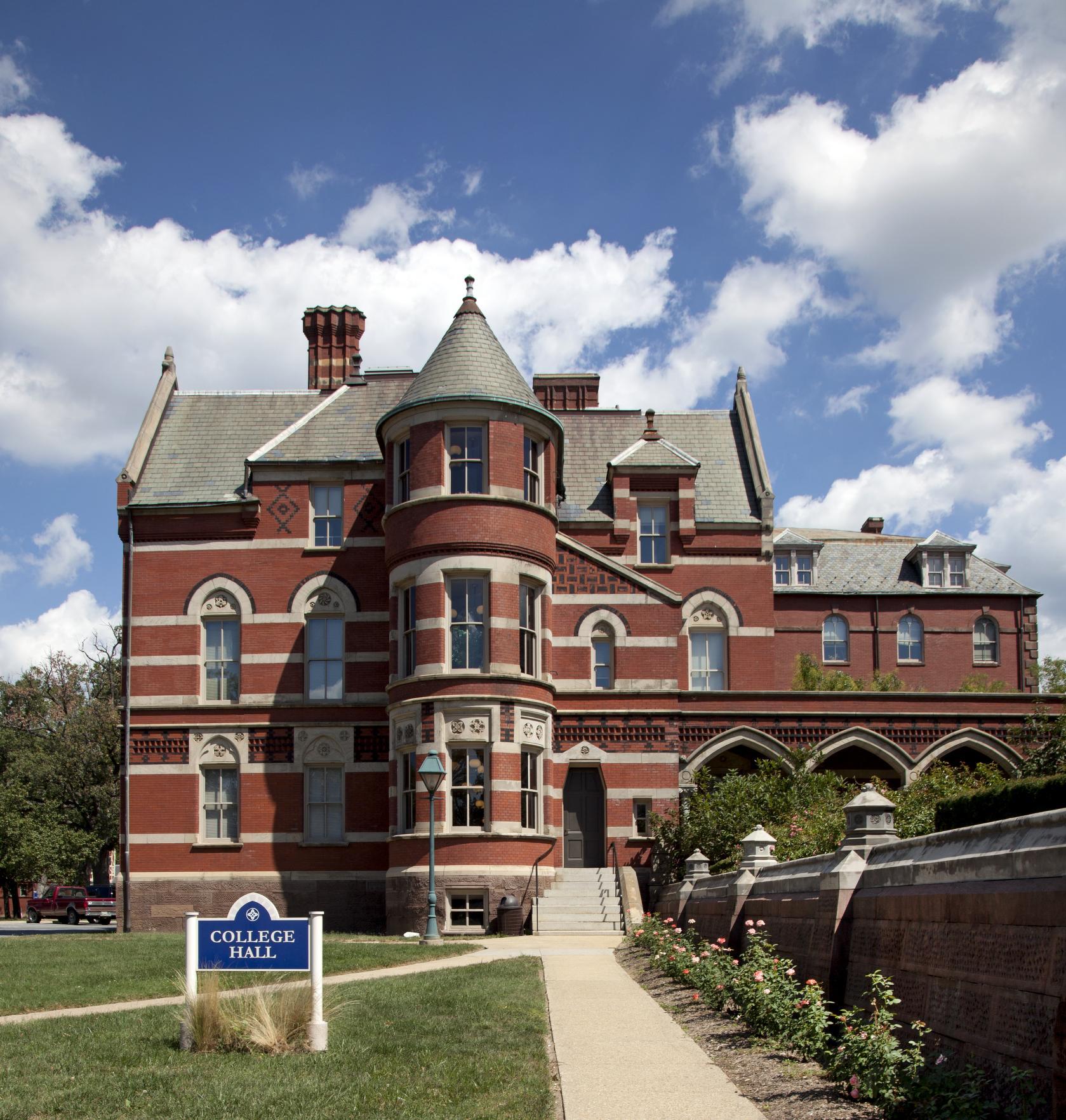
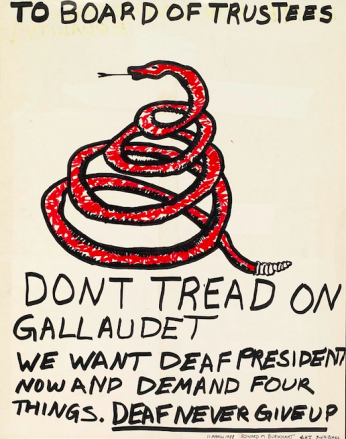

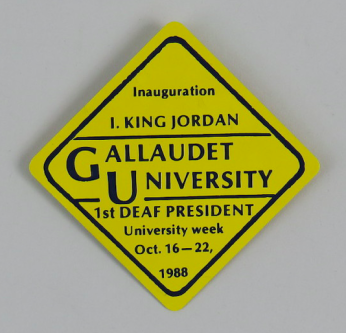
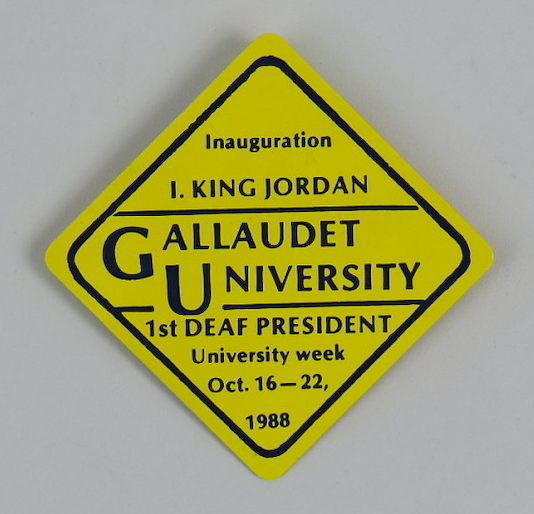
![Capitol Crawl Jennifer Keelan-Chaffins wears a bandana as she crawls up the U.S. Capitol steps on her hands and knees. On her left is a man bending over and on her right a woman moves up the stairs on her back. All three protesters wear matching light blue shirts from the ADAPT organization. In front of them are media personnel with cameras and microphones recording the protest. [Photo Credit: Associated Press]](/sites/default/files/styles/crop_320x320/public/Capitol%20Crawl%20AP%20Photo.jpg?itok=3SKhheG1)
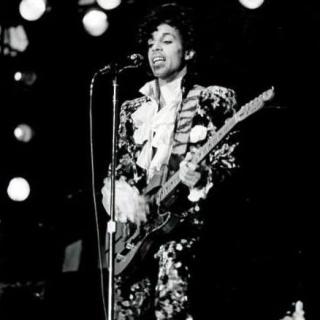
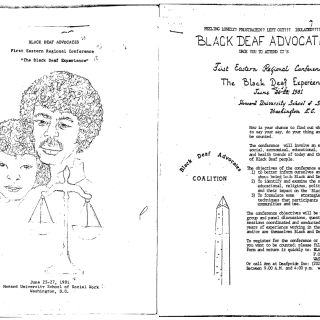
![Sketch of the mythical fuan by Pearson Scott Foresman. [Source: Wikipedia]](/sites/default/files/styles/crop_320x320/public/2023-10/Goatman_Wikipedia_Faun_2_%28PSF%29.png?h=64a074ff&itok=C9Qh-PE1)












